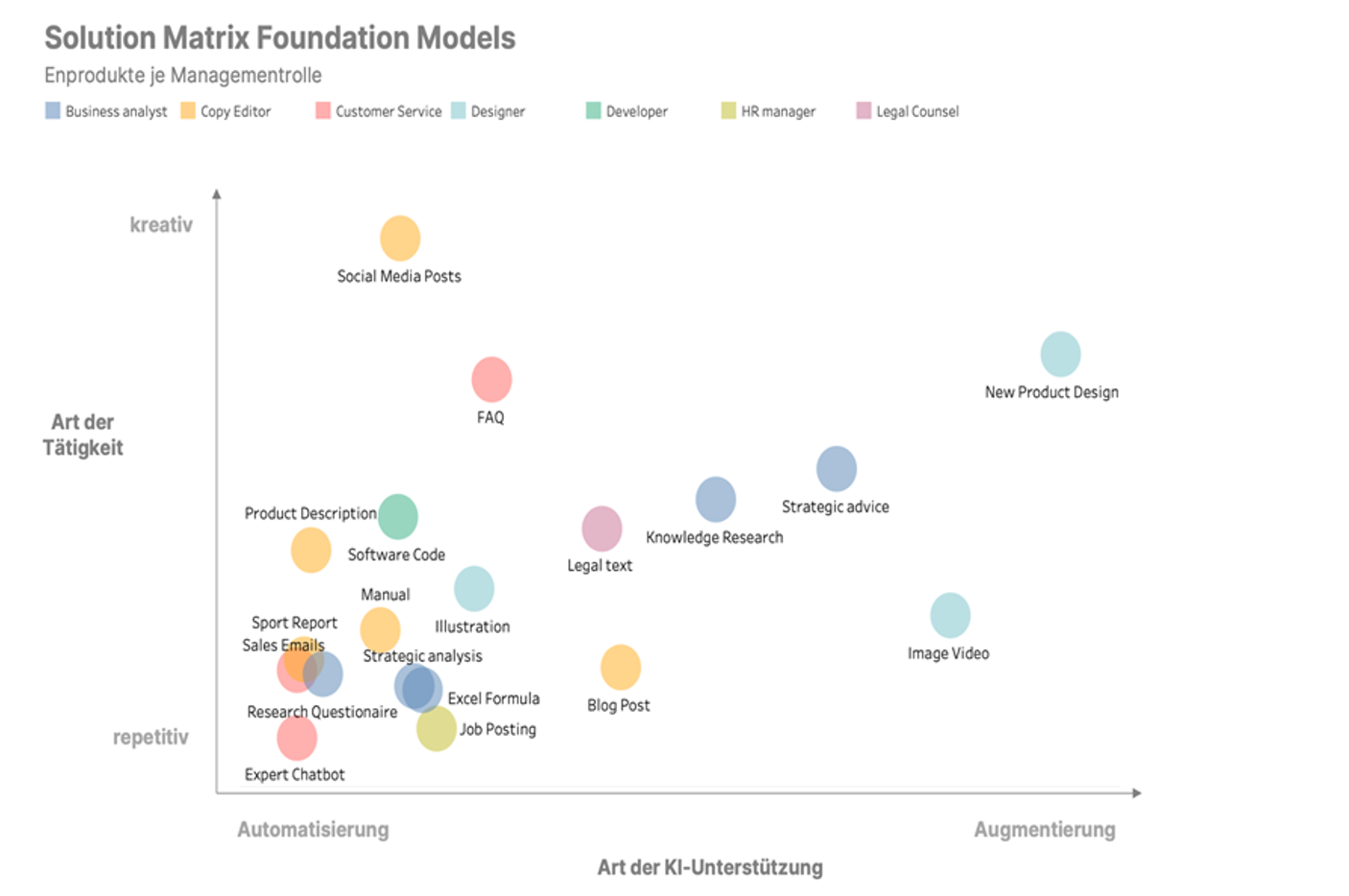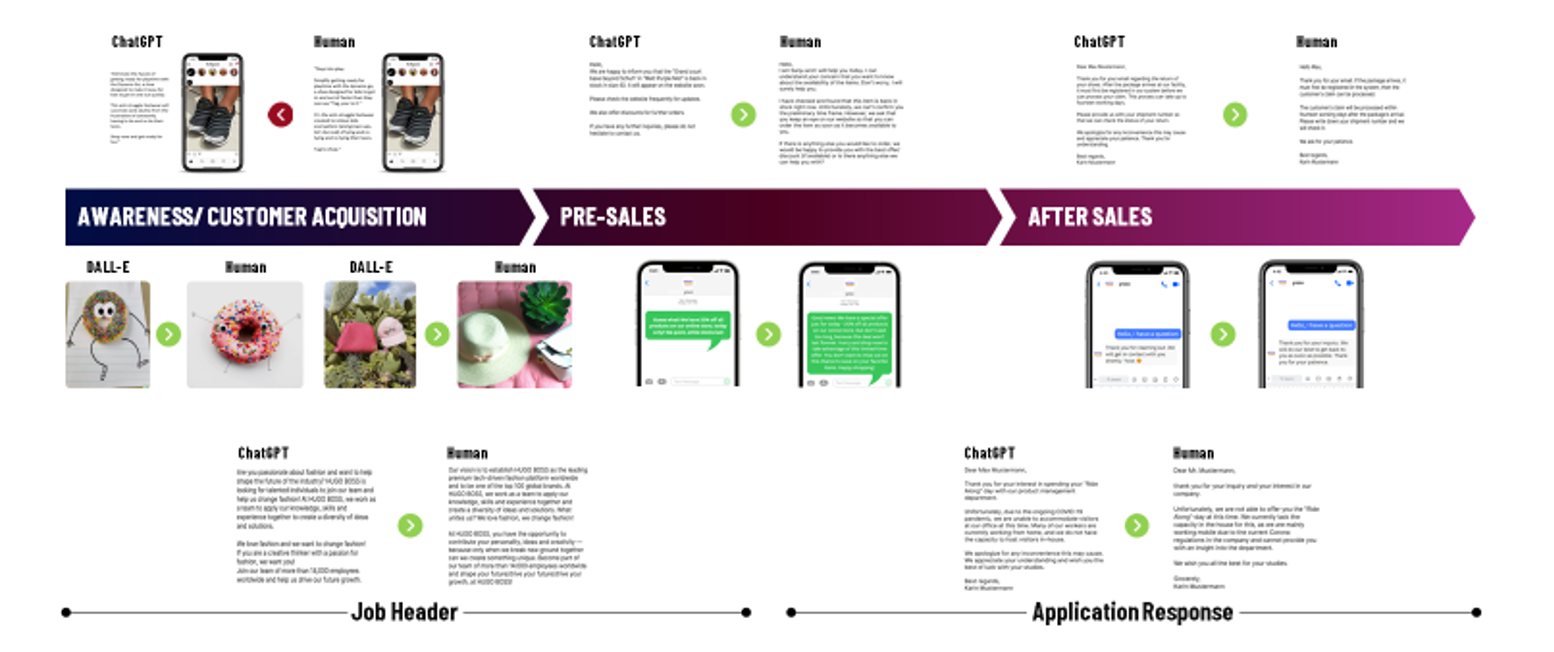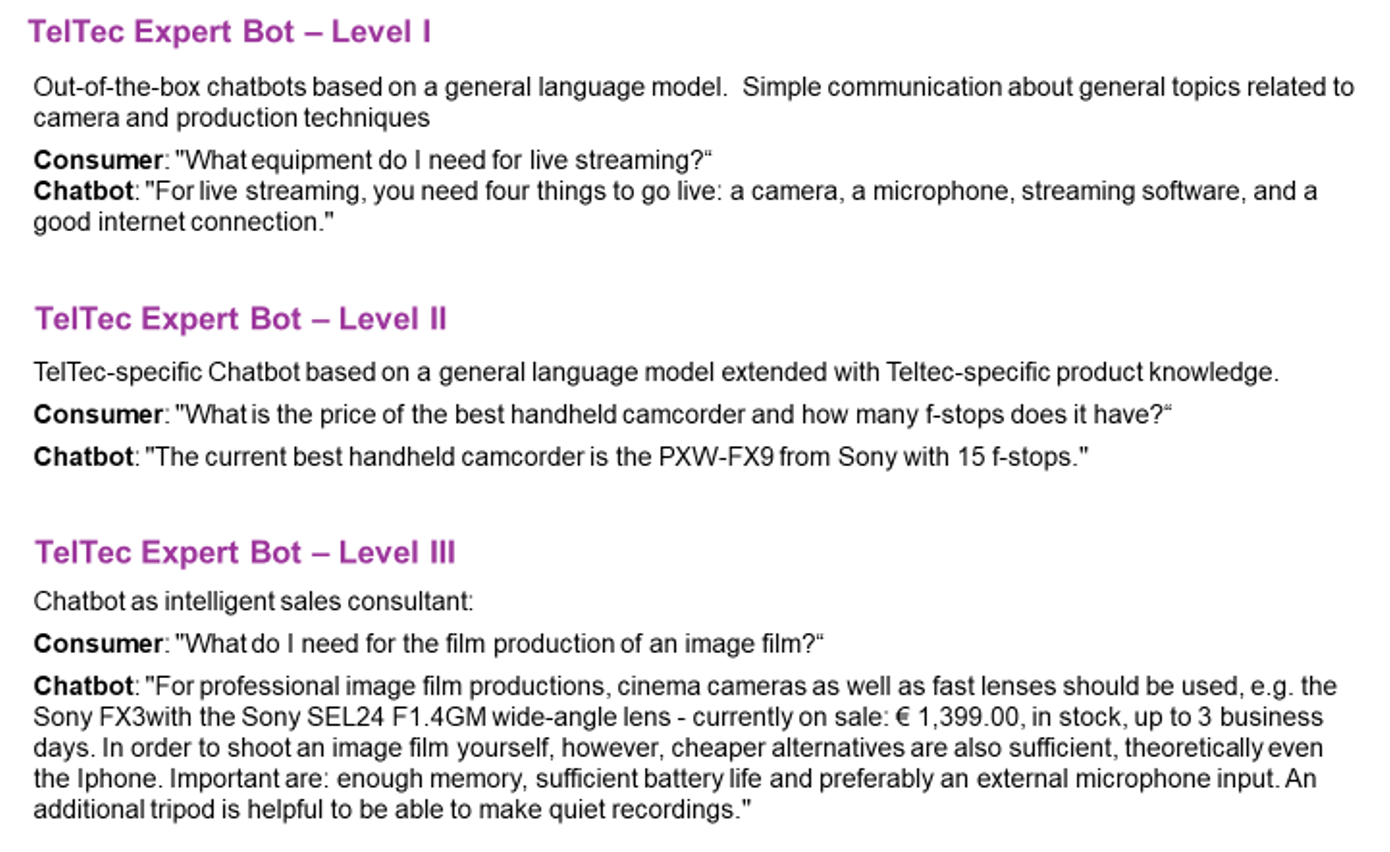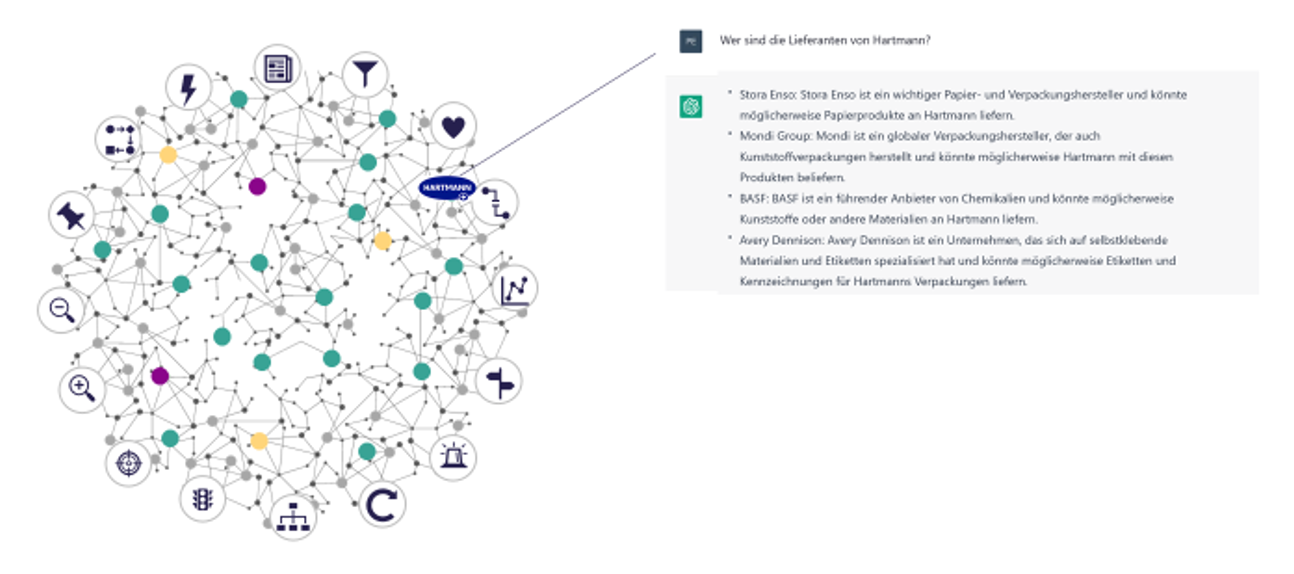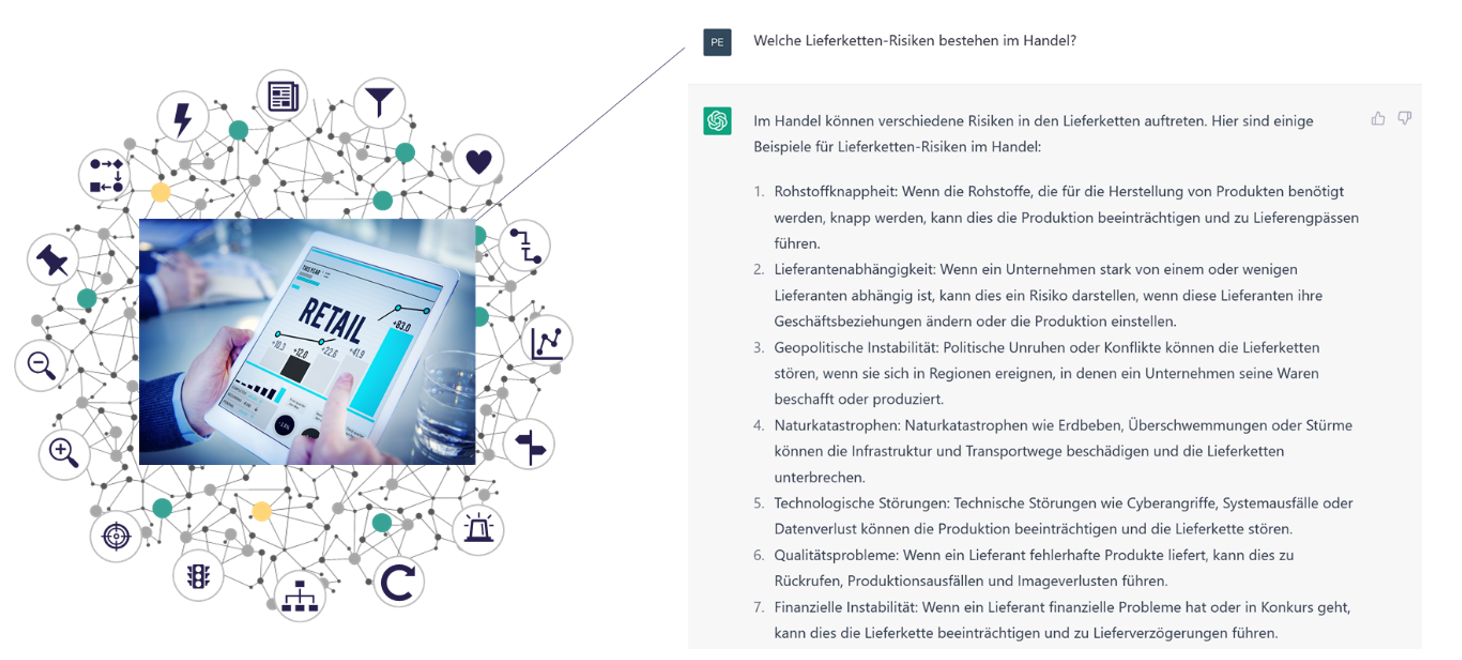Introduction: Foundation Model-Solution-Matrix
Due to the reduction in effort and the simplicity of the application, companies can focus more on the business perspective. The technical complexity and risk of introducing these processes is significantly lower compared to previous AI projects.
The Foundation Solution Matrix (see figure) provides managers with an overview of possible foundation use cases for various company roles.

